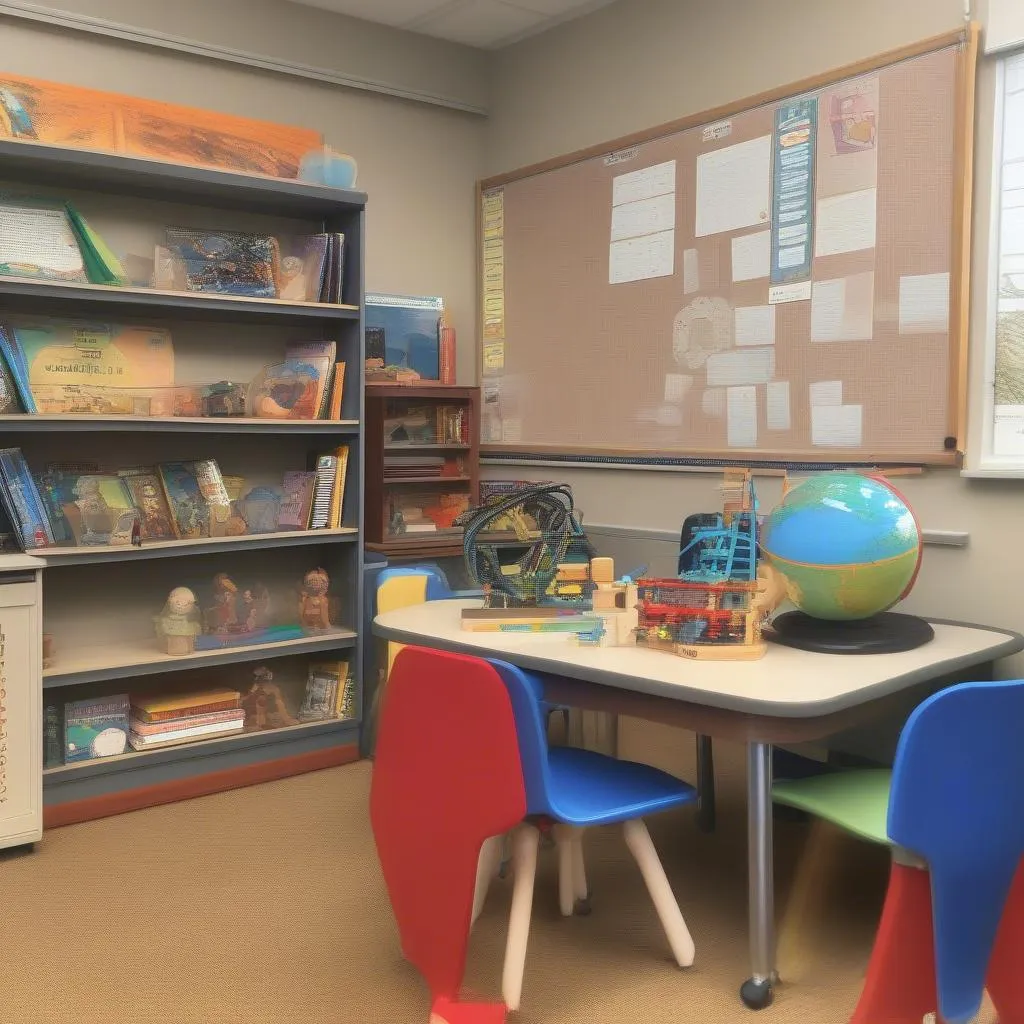“Mommy, why does it rain? Why are leaves green?” – Children’s innocent questions always make us ponder. Children are like seedlings, full of immense potential, eager to explore the world around them. And in kindergarten, the “science exploration corner” plays a crucial role in fostering a love for science, helping children develop essential skills for the future.
The Importance of a Science Exploration Corner in Kindergarten
Creating a science exploration corner in kindergarten is not just about “playtime”; it’s a way to help children access scientific knowledge naturally and effectively.
1. Sparking Curiosity and the Desire to Explore
Imagine a classroom corner decorated with models of the sun, earth, and robots assembled from building blocks. Children will surely be excited and readily ask questions like, “Why is the sun hot?” or “How can I build a robot?”. From there, they begin to become curious, wanting to learn more about the phenomena around them.
2. Developing Thinking Skills and Problem-Solving Abilities
The science exploration corner is an ideal environment for children to develop logical thinking skills, analytical abilities, synthesis, and problem-solving skills. For example, when children participate in the experiment “Hot water melts faster than cold water,” they will learn to observe, record, compare experimental results, and draw their own conclusions.
3. Cultivating Social Skills and Teamwork
The science exploration corner is also a place where children learn to communicate and cooperate with friends while participating in group activities. For example, when children participate in assembling house models, they will learn to share ideas, listen to friends’ opinions, and work together to complete a common task.
Considerations When Building a Science Exploration Corner in Kindergarten
Building a science exploration corner needs careful planning, appropriate for the children’s age and development.
1. Choose Age-Appropriate Content
Teachers need to select scientific content appropriate to the children’s level of understanding, neither too difficult nor too easy. For example, with younger children, teachers can teach about simple natural phenomena like rain, sun, and wind. For older children, teachers can teach about more complex phenomena such as plant growth or animal species.
2. Utilize Hands-On Methods
Instead of having children memorize theories, teachers should encourage learning through hands-on activities. For example, instead of lecturing about the growth of sunflowers, teachers can have children plant sunflower seeds themselves and observe their growth over time.
3. Create a Fun and Safe Learning Environment
The science exploration corner needs to be attractively designed, safe, and child-friendly. Teachers can decorate the learning corner with vivid images, safe wooden or plastic toys, and ensure they are not hazardous to children.
4. Consult and Collaborate with Experts
Consulting experts in early childhood education and science will provide teachers with valuable experience and knowledge in designing and implementing a science exploration corner. According to Professor Nguyen Van Tai, a renowned Vietnamese early childhood education expert, “The science exploration corner should be designed based on theory and practice, suitable for the age of children, and promote their holistic development.”
The Story of Baby An and the Science Exploration Corner
“I want to know why the sky is blue,” baby An innocently asked her teacher. “Come to the science exploration corner and find the answer to your question,” the teacher said with a smile. Baby An excitedly stepped into the learning corner, looking at books and models of the sky, sun, and earth. She became even more curious. She saw a book with pictures of a raindrop with sunlight shining through it, and she became even more curious. She asked her teacher, and the teacher explained that sunlight consists of many different colors, and blue is the color least absorbed by the atmosphere, so we see the sky as blue. Baby An was very happy to have found the answer to her question, and she became even more curious and eager to explore the world around her.
Call to Action: Let’s Improve the Quality of Early Childhood Education
Let’s work together to improve the quality of early childhood education by creating attractive, safe, and effective science exploration corners for children. Contact us at 0372999999 or visit us at 234 Hao Nam, Hanoi. We are always ready to provide solutions and support you in building a science exploration corner for children!
